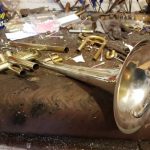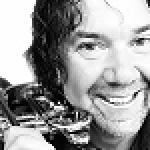WindWorks Trumpet Academy › Forums › WindWorks › BE. And windworks
- This topic has 4 replies, 3 voices, and was last updated 5 years, 3 months ago by
 a4audinut.
a4audinut.
-
AuthorPosts
-
-
29 March 2019 at 8:04 am #20724
 a4audinutParticipant
a4audinutParticipantGreg
I am working with an embouchure system called BE, when applied correctly it make it much easier to ascend without increasing the blow effort and has extended my range considerably. It seems to work hand in hand with you methods, your thoughts -
31 March 2019 at 11:35 am #20795
 Greg SpenceKeymaster
Greg SpenceKeymasterHi, I must say this is not a post that I expected to see although I am sure WW and BE are aiming for the same result but coming from polar opposite approaches, so my thoughts…
1. “When applied correctly…” is a vitally important point. I have seen many people not apply it correctly and it causes massive overexertion.
2. If your playing is free, your sound all-over, especially the lower and “cash” registers are open and resonant then that is wonderful.
3. I think you are referring to my apporach of PASSIVE range extension i.e. no blow. If the lips can do their thing without air being forced, then fantatsic. My experience with BE students has in most cases been the opposite.
Just so you totally understand, I am talking from my real life experiences with students. I know the huge amount of work required to develop and publish an approach to playing and totally respect anyone who has done it regardless of the differences. There must be difference otherwise things would not move forward. I like to consider WW more of a trouble shooter for people who are having issues no matter what approach or “school” they are following.
Basically, if positive results are forthcoming then there is no problem with any method or approach; If it is working for you go nuts with it.
All the best,
Greg -
2 April 2019 at 12:13 pm #20924
 a4audinutParticipant
a4audinutParticipantGreg
I have only been working with this for awhile but firmly believe (maybe incorrectly) that the lips must form the aperture for the note prior to applying air for things to work. Im looking at BE from that perspective alone, and that is where I see similarities in the 2 systems (again perhaps incorrectly).
Please correct me if im not on base here. I just experiment with a lot.
RodHey Rod, totally correct as far as preset goes. I demonstrate this a lot as the course progresses. Cheers.
-
3 April 2019 at 7:11 am #20971
 Ronald CarsonParticipant
Ronald CarsonParticipantI know you are looking for Greg’s response. After reading your initial post, I thought BE to be something to look into. I am still turning my head for “get a great range quick” schemes. BEWARE of get rich quick schemes 🙂
It seems from what I read that it is a lip rolling-in technique as you ascend. Is this correct? That seems to be the essence of it.
As far as the aperture is concerned, from my understanding that is just one important aspect of shape and that the tongue and the jaw is the other when ascending as well as a slight pivot of the horn.
Pivot of the horn is different for everyone and ideally is kept to a minimum.
The other idea about the aperture must be set before applying air, may have some value. It has been my experience that the aperture also responds to the air.
If this system causes you to clamp the lips, then I think it will be inefficient. The developer of BE may not intend for disciples to do this, but it might be an unintended consequence for many BE followers. That is what I have experienced with students
Can you describe more of the techniques?
-
4 April 2019 at 2:33 am #21004
 a4audinutParticipant
a4audinutParticipantI’ll try but please understand that with any system I only take from it what works for me. Yes I know some people who are pursuing for upper register and sometimes “wig” the lip clamp for upper register.
This was not my goal, I can play a hi f with some strain and this will do until I correct it since I don’t see Woody Herman charts anymore. But my goal is to play the hi g with the ease and tone of a staff g. I hope to make my embouchure more able to respond and make these changes or movements coordinated. I think many confuse BE with the 2 settings used in the exercises. Using either of these exclusively will in my opinion limit a player greatly, but I have found there is much to learn by doing them to the fullest extent. I have seen some small and positive changes in effort to play notes but not by going to extreme but by letting the experience of the extremes unconsciously change the mouth and lips (tongue-jaw too). These are changes in feel and focus for me more than anything. And as I continue I may stop and take the good I’ve found and move on. I think more than anything it is a method of teaching yourself what works for you. We all have different capacities and talents and strengths, mine has always been strength tone and good sound to high c. I would do nothing to compromise that and if I see anything the program is doing that effects the money skills ill stop right away. I think Greg said his experience is with actual students of BE and I’ve seen where some advocates have used the system as a wig to get hi notes with a lip clamp and for some this is their natural and best way to play. I’m just looking for ease and applying some of the exercises is doing a lot to teach me what’s happening in the MP. The author of the BE book seems to agree with me that these extreme exercises are simply to make you more aware of the factors that make up your aperture. I think those who pursue extreme roll in or out as a setting are missing some of the advantage of developing the stated goal of balance and focus.
Just a hackers opinion with too much time on his hands. And I certainly have found my application to reduce the blow force required, but I only use the settings for practice and let my normal aperture play and change unconsciously if it needs to. This ease of wind is how I see the 2 methods being simpatico I have developed a feel that how I direct the wind over my lip has a lot to do with ascending with some success and never experienced that before.
Rod
-
-
AuthorPosts
- You must be logged in to reply to this topic.
Recent topics
-
Question of Curiosity – To Teeth or Not To Teeth
by
clawsonk123
1 month, 3 weeks ago -
1.O / 2.0 routine
by
jice.gif
2 months, 3 weeks ago -
Abdominal surgery and time off the trumpet
by
DQ
9 months, 3 weeks ago -
Allegro or Presto Practice Routine
by
djm297
10 months, 2 weeks ago -
Tongue lock – Throat lock
by
Ivo Carrabs
11 months, 1 week ago
